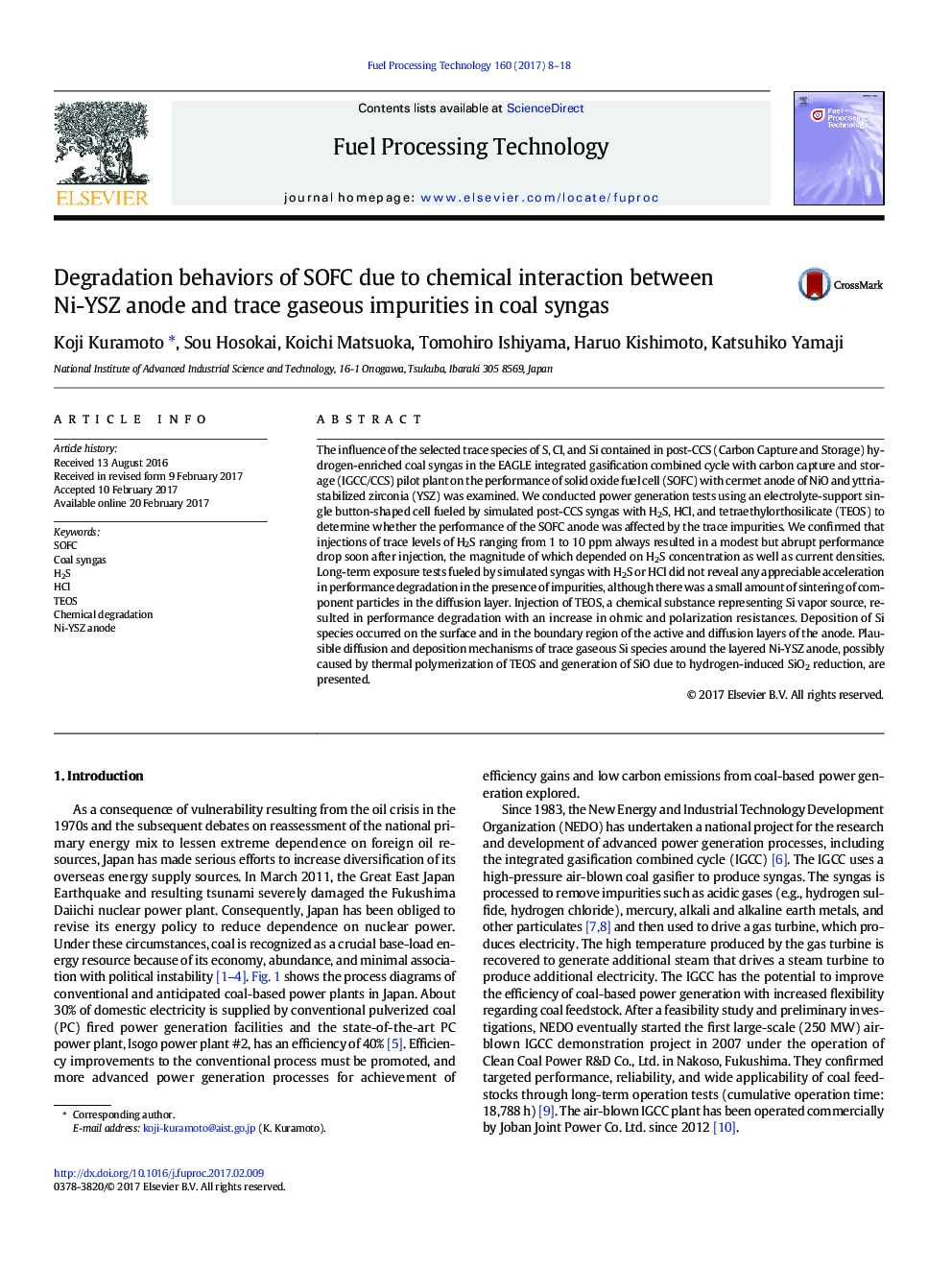| کد مقاله | کد نشریه | سال انتشار | مقاله انگلیسی | نسخه تمام متن |
|---|---|---|---|---|
| 6476403 | 1425386 | 2017 | 11 صفحه PDF | دانلود رایگان |

- Influences of trace S, Cl, and Si species in post-CCS syngas on the performance of Ni-YSZ anode cells were examined.
- Injections of 1 to 10Â ppm H2S caused abrupt cell performance drop dependent current density.
- Long-term exposure to 1Â ppm and 10Â ppm H2S or HCl did not reduce performance.
- TEOS injection caused performance drop and Si deposition between anode layers.
- Layer microstructure differences may cause oxidation and deposition of Si species.
The influence of the selected trace species of S, Cl, and Si contained in post-CCS (Carbon Capture and Storage) hydrogen-enriched coal syngas in the EAGLE integrated gasification combined cycle with carbon capture and storage (IGCC/CCS) pilot plant on the performance of solid oxide fuel cell (SOFC) with cermet anode of NiO and yttria-stabilized zirconia (YSZ) was examined. We conducted power generation tests using an electrolyte-support single button-shaped cell fueled by simulated post-CCS syngas with H2S, HCl, and tetraethylorthosilicate (TEOS) to determine whether the performance of the SOFC anode was affected by the trace impurities. We confirmed that injections of trace levels of H2S ranging from 1 to 10Â ppm always resulted in a modest but abrupt performance drop soon after injection, the magnitude of which depended on H2S concentration as well as current densities. Long-term exposure tests fueled by simulated syngas with H2S or HCl did not reveal any appreciable acceleration in performance degradation in the presence of impurities, although there was a small amount of sintering of component particles in the diffusion layer. Injection of TEOS, a chemical substance representing Si vapor source, resulted in performance degradation with an increase in ohmic and polarization resistances. Deposition of Si species occurred on the surface and in the boundary region of the active and diffusion layers of the anode. Plausible diffusion and deposition mechanisms of trace gaseous Si species around the layered Ni-YSZ anode, possibly caused by thermal polymerization of TEOS and generation of SiO due to hydrogen-induced SiO2 reduction, are presented.
Journal: Fuel Processing Technology - Volume 160, 1 June 2017, Pages 8-18